Bearded dragons are undemanding and hardy pets. However, they are hooked on a lavish lifestyle.
Due to their size and activity level, the popular beardies need spacious and well-equipped enclosures to thrive.
With all the different options and dilemmas flying around the web, you may wonder what the truly best setup for bearded dragons is.
Let’s try to find out!
I’ve summed up the best resources, so you can give your pet the setup he deserves.
> Further Reading: The Complete Bearded Dragon Care Sheet
The Bearded Dragon Setup in Short
| Tank size |
|
| Temperature range |
|
| Humidity |
|
| Lighting |
|
| Substrate |
|
| Supplies & Decoration |
|
Perfect Bearded Dragon Setup at a Glance
- The ideal tank size depends on the bearded dragon age. The 40+ gallons is great for hatchlings, 50+ gallons for juveniles, and 75-120 gallons for adults; the bigger, the better.
- The tanks are usually from glass, wood-glass combo, or resilient plastic (PVC or ABS).
- The perfect temperature range in the enclosure is 110°F (43°C) on the hot side (the basking spot) end down to 70°F (20°C) on the cool end (or during the night).
- Heating options include halogen daylights, Deep Heat Projectors, Ceramic Heat Emitters, and undertank heaters. All should be controlled by a thermostat.
- Beardies need superb lighting – both the basking light (daylight) and the full-spectrum UV (10.0 or stronger, for desert dwellers).
- Other equipment pieces include water and feeding trays, caves, basking rocks, and hammocks.
Bearded Dragon Natural Habitat
The bearded dragon’s natural habitats are the arid areas of Australia, where vegetation is scarce. The ground is mostly dry, hardened soil, and rocks, with some loose soil and sand. Diverse vegetation doesn’t thrive, but there are still desert shrubs and small trees suitable for hiding and climbing.
Water is scarcely available, but it is well-utilized when it does accumulate. That is why many beardies enjoy soaking.
The Bearded Dragon Tank: What Type of Enclosure Should You Use?
According to what we can find in the bearded dragon’s natural habitat, we can conclude the best-suited match in captivity is a desert-type terrarium.
Note that not all features of a typical desert vivarium setup are appropriate for beardies, especially the young ones. However, there are certainly some principles of desert setup you need to respect:
- Beardies like it hot. The temperatures under the basking light can go above 100 degrees F.
- Low humidity. Bearded dragons have evolved to breathe relatively dry air. High humidity – above 65% – can cause deadly pulmonary disease in your pets.
- Beardies like and require a bright light above their tank keeping them warm and alert. Also, they need a strong UV light source – full-spectrum UV light is necessary for proper metabolism and bone development.
- Despite what you may think when you hear “desert,” the substrate in the beardie tank should never be loose like quartz or river sand. Instead, desert soil mixes that include sand, soil, and clay are the best option, along with slate and rocks used for hides and decoration.
> Further Reading: The Bearded Dragon Behavior (Common & Unusual) & Health
Tank Size and Type for Bearded Dragons
Tank size will depend on the age and size of your beardie.
If you are getting a juvenile, you can house him in a smaller, more straightforward setup until he grows up.
With adults, go with a full, large desert vivarium setup. Adult bearded dragons are of moderate size but are still quite bulky and active. Hence, they need large terrariums.
Of course, you can always buy the adult beardie enclosure right from the start – your baby beardie won’t be bothered by the extra space. On the other hand, if the terrarium is too small, your beardie may become lethargic and lifeless or prone to Glass Surfing.
Juvenile enclosure
Today, a 40 or 50-gallon tank is a standard recommendation for baby or juvenile bearded dragons. Earlier, a 20-gallon tank was commonly recommended, but today, with better standards of reptile care, we consider it valid only as a temporary setup.
Many people choose to equip a juvenile beardie tank in a simple, easy-to-clean way with an artificial solid substrate like a paper towel or reptile carpet. There are a few reasons: one, the juvenile tank is only temporary, and two, paper towels are much easier to clean with the little poopers around.
Let’s see what you need to house your little beardie:
- Glass tank (40-50 gallons)
- Simple bedding (tiles, paper towels, newspapers)
- Heat bulb within a clamp lamp + Linear fluorescent UV bulb
- Terrarium mesh lid
- Cave for hiding
- Basking rock
- Very shallow water bowl (baby dragons drown easily!)
- One branch for climbing
You can find more details on each of these components below.
As a general rule, keep juvenile enclosures minimalist, as this will prevent crickets and other feeder insects from hiding from your pet. You can go wild with decorations later when you set up his adult cage.
Type of Tank for a Bearded Dragon
Did you know the tank itself can be made of different materials and that some are more suited for bearded dragons than others?
Let’s find out what types of tanks you can utilize for a bearded dragon enclosure.
Glass Terrariums
Glass tanks are a classic. They offer high visibility and are easy to disinfect. They are not as prone to scratching as plastic tanks. However, for adult bearded dragons, you will need quite a large cage, with the ideal volume being 120 gallons ( ~450 liters). With this in mind, let’s shed light on a couple of issues lurking if you intend to use a glass tank only.
First, the larger the glass tank is, the more prone it is to breaking.
Secondly, a large tank will cost you significantly more than a smaller one, mostly because it has to be made out of thicker glass.
The way to save money on glass tanks is to buy second-hand ones from aquarists. You may be able to find them relatively cheap. Since you won’t be filling it with water, the possible leakage won’t bother you. Just make sure that the tank doesn’t have a hefty crack since this will get worse in time.
While I would always pick a glass tank for a juvenile bearded dragon, for a fully-grown adult other options could be more suitable.
Plastic Enclosures
In the past couple of decades, plastic tanks have evolved a great deal and went from simple plastic crates to professional, advanced enclosures.
These pre-made reptile tanks are usually made out of PVC or ABS plastics. Usually, only the front side is made out of clear, see-through plexiglass-type material; other sides are opaque. Some consider this a disadvantage when it comes to viewing, but your pet might feel more secure in this type of enclosure.
Plastic tanks are also less prone to breaking than glass tanks, and you can drill in the holes for cables, making the entire setup neater.
The issue with plastic tanks is that they are expensive – especially the professional one-piece molded terrariums such as Vision cages, with built-in light structures and other convenient tweaks. It is more affordable to try to find a DIY-style plastic tank.
Wooden Enclosure
Let’s face it – building a big glass tank or buying a large pre-made plastic enclosure of 100 gallons or more can get pricey.
For those of you who dislike plastic, like DIY projects, or simply want to save money, wooden enclosures might be a winning option.
One of the smarter hacks out there is to utilize a wooden shelf or a cabinet as a terrarium. You can also build or order a wooden tank made from scratch. Breeders frequently do this to reduce the housing costs for many animals they have to keep separately.
By construction, wooden tanks are similar to plastic ones. A plywood enclosure will have all sides made out of wood except for the front, which is usually a two-piece sliding glass door system.
One big drawback of using wood for your tank is that the material is porous – it absorbs water which makes it prone to rotting and mould.
You may think this is not an issue because desert terrariums are generally dry. But think again – you will have to give your dragon sprays, and he will splash around in his water bowl. The wood will soak all of that in, along with impurities that will make it smelly and difficult to disinfect.
The way to combat this issue is to apply a non-toxic, waterproof coating like a pond shield over the entire wooden surface. It will make it smooth and waterproof and also give it a nice, glossy finish. However, note that quality products of this kind might be hard to find, especially at a low price.
A very detailed tutorial for a well thought-out plywood design can be found here:
The Best Bearded Dragon Lighting
Light is a very important feature of almost any reptile tank. Besides giving you a nice view of your pet and his home, proper lighting matters for your beardie’s health too.
Being diurnal lizards naturally exposed to the blazing Australian sun, bearded dragons need their entire enclosure to be lit up so they can feel at home.
The second important point is the UVA and UVB light, which are necessary for your pet to synthesize vitamin D and for proper function of the overall metabolism, including calcium metabolism and strong bones.
Bearded Dragon Daylight Bulbs
Here are the options for beardie tanks
- Incandescent bulbs. Inexpensive, easily available, good heaters, but not as good at emitting heat as halogens. They’re housed in a simple, affordable clamp-lamp.
- Halogen bulbs. Halogens provide a lot of heat and realistic sun-like color temperature. On the downside, they are more pricey than incandescents and are power-hungry. Miniature halogen bulbs for reptiles use less electricity and fit into various cases more easily.
- Fluorescent/Compact bulbs. These come in various shapes, sizes, and color temperature ranges (K); they do not emit significant heat, so you use them with a heat-emitting bulb (like a Ceramic Heat emitter) to get the basking effect. They can be used on the cool side of the tank if you want to have a light there, too.
- Mercury Vapor Bulbs. Powerful but pricey basking lights that combine basking lights and UV light (more on those below)
> Further Reading: The Bearded Dragon Lighting
UVB Lights
Linear fluorescent bulbs are the most common type of UVB lighting used in most terrariums. Bearded dragons need the strongest grade – 10.0, T5 or T8 type (T5 is more powerful), and the radiation have to cover 65 to 80% of the habitat.
Another important thing about UV lights is that you have to replace the bulbs every 6 to 12 months because their radiation strength weakens over time. Buying a UV meter is the most reliable way to ensure your UV lights are still going strong.
Since juvenile beardies grow fast, they require enough UVB for their bones to grow strong and to avoid any risk of metabolic bone disease. It is best to have a full-spectrum UVA/UVB lamp, but be aware that UVB is the more important part of the ultraviolet spectrum and, therefore, a must. But there is not a lot of room for worry as modern “UVB” lamps are actually full-spectrum!
Ideal Tank Temperature: The Heating Devices
As you have learned before, beardies are desert dwellers. That means that they prefer high temperatures, but not only that. It also means that they need a temperature gradient – a really warm spot under the basking lamp and a cooler opposite side of the terrarium.
Besides lights, having an elongated tank instead of a square one will help you in providing the gradient.
The temperature at the basking spot should reach 110°F (43°C). The average temperature should never fall below 70°F (20°C) – not even at night. Some sources say 65°F (18°C), but I would rather stay on the safe side.
In most homes, the temperature doesn’t fall below this line anyway. However, in case the temperature gets lower than 70°F in your “dragon room”, you should get an undertank heater to keep the temperature in the desired range.
In theory, an undertank heater is better for this purpose than an above-head heater because it is a more natural type of heating for nighttime. In nature, rocks that have heated in the sun during the day radiate that heat at night – from below. At least, that’s the theory. In recent years, many hobbyists have preferred overhead heat sources as being more natural. Ceramic Heat Emitters (CHEs), or even better, Deep Heat Projectors (DHPs) are both valid options that go into regular lightbulb sockets.
A thermometer is a must to control the heating equipment. Don’t risk going without it!
Bedding: What Is the Best Bearded Dragon Substrate?
Don’t be surprised if you find some contrasting information on the best bearded dragon substrates. Recommendations have changed a lot over the years, mostly with the introduction of newer, safer natural substrates and the concept of naturalistic and bioactive terrariums.
Earlier, keeping beardies on solid absorbent substrates like paper towels or newspapers was the norm, mostly due to fear of impaction and the ease of cleaning. Many people still opt to use these, especially with young beardies who are more prone to swallowing the substrate and are just rowdy in general.
Although surely practical, these unnatural “hygienic” beddings prevent your lizard from displaying natural behavior like digging and burrowing – and are also quite unsightly.
> Further Reading: The Bearded Dragon Behavior (Common & Unusual) & Health
Let’s have a quick overview of the types of substrate you can use for your beardies.
| Suitable substrate | Not suitable substrate |
|
|
> Further Reading: The Bearded Dragon Substrates
Now, let’s have a quick look at the most commonly used recommended substrates and their features.
Bioactive(-ready) Substrates
The new generation of professionally-mixed natural substrates considers the natural needs of desert-dwelling lizards. They support natural activity and joint health, look awesome, and allow you to create a bioactive terrarium if you wish.
The drawback of these substrates is that they are pricier than the rest. This is especially true if you’re not planning to include bioactive features that would make the tank self-cleaning and you have to change the entire volume of the substrate occasionally. Also, some beardie owners are still afraid of substrate-caused impaction with loose beddings.
DIY Bearded Dragon Substrate
You can make a natural beardie substrate yourself by mixing 40% organic topsoil (with no additives such as pesticides and fertilizers), 40% play sand, and 20% Excavator Clay.
If you can’t get a hold of the Excavator Clay, make 50-50% topsoil-sand mix.
It is best to sterilize soil and sand by baking them at 200°F for about 2 hours.
Slate
Slate is wonderful to combine with other solid or loose substrates to create solid, gritty surfaces for beardies to climb and bask on. It is also regularly used for making caves and other decor. Slate also warms up nicely and then radiates the heat, which bearded dragons love.
However, using slate as a sole substrate is not that great. The stone is hard on the beardie’s joints, is not absorbent (meaning splattered poo everywhere and diligent disinfection), and can break a glass tank if dislodged.
Newspaper
Newspaper is probably the cheapest and most easily available disposable ground cover for your beardie’s tank. Most newspapers soak in liquids with ease, which is good for avoiding spreading the mess around the tank. The paper is also quite sturdy, so it won’t slip under your pet’s feet when he gets active.
Freshly printed newspapers should always be left out to dry for a few weeks before putting them in an enclosure. That way, you will be sure that the printing paint has dried. However, know that in many cases, the color may still leach, staining your dragon’s belly and feet.
Paper Towels
Paper towels are another disposable substrate favorite. They look neater and cleaner than newspapers do, and it is very easy to replace them. Paper towels have superior absorbing powers. They are most commonly used in juvenile tanks.
Reptile Carpets
While reptile carpets are often used for beardie enclosures, note that they don’t last too long. Since beardies defecate a lot and all over the place, they get soiled and stinky quickly. That means you have to machine-wash them every week, leading to loose fiber and general gradual disintegration of the carpet. Also, reptile carpets can’t provide your beardie with a place to dig and burrow.
If you are still getting a reptile carpet, make sure to get one that is bearded dragon-friendly – with no fiber loops sticking out. Bearded dragons can get their long claws and fingers stuck in there and get hurt.
Bearded Dragon Supplies and Accessories
In all vivariums, decorative elements are not there just for the looks – they provide important functions so your pets can bask, rest, and hide according to their natural needs and instincts.
There are several essentials for bearded dragon tanks. Beardies require:
- Basking rock or log under the heat lamp
- Branches and/or hammocks for climbing
- A tight hiding place; can be made from slate
Basking Structures
Bearded dragons love to bask, as almost all diurnal lizards do. Provide them with a basking area – such as a flat rock setup or a log right under the spotlight.
However, be very careful that the basking spot doesn’t overheat, especially if it’s a stone surface that can store a lot of heat. You can prevent this by picking the right strength of light and by assessing the right distance from the basking site. Check the temperature with a temp gun, if possible.
Climbing Structures – Branches and Hammocks
Another favorite activity of all bearded dragons is climbing. The climbing behavior is also observed in their natural habitats. When perched up on some high spot, they can bask in the sun, watch out for predators, and track down prey – all at the same time! That is why your pet beardie will gladly hang out above ground in the terrarium setting, too.
Sturdy, clean branches are always a good choice for bearded dragons. Also, there are specially designed hammocks for bearded dragons. They can also be homemade. Most beardies find these extremely comfy and love to hang around in them once they get used to it.
Hiding places
Some resources express their concern about using caves and other types of cover for bearded dragons. Since they need high amounts of UV light to stay healthy, the worry is somewhat justified.
However, hiding behaviors are natural for all animals, especially the ones that are prey. A lizard that doesn’t have a place for hiding will always be one stressed lizard.
To point it out one more time: healthy, active dragons love to bask. If your beardie spends too much time hiding, rather than removing his hiding place, you should try to track the reasons for his behavior. Is he eating regularly? Are there any signs of illness? Is he under stress because you’ve changed his surroundings, or perhaps you have been handling him too much?
Should I Take My Bearded Dragon For a Walk?
Despite everything you can see on the web and on YouTube, beardies do not long for a walk in the park or a drive to an exotic location.
We will explore this topic in-depth in our upcoming article on health and behavior. But what you need to know for now is that all that bearded dragons require is access to sunlight in a secured, predator-free, pesticide-free area – to roam around, bask in the sun, and perhaps snack on some dandelions. Ideally, it should be your own or a friend’s backyard – an environment you are in full control of.
> Further Reading: The Complete Bearded Dragon Care Sheet
How to Walk a Bearded Dragon Properly
Here is some advice on how to start taking your bearded dragon out:
- Never take out a beardie that is not mature enough and isn’t used to being handled.
- You should start slow and take your bearded dragon out to a chosen location only for a few minutes at a time.
- Take the beardy outside only when the weather is suitable – as warm as the middle temperature in their terrarium. Never take them out when the humidity is over 65% and when the temperature in the shade is below the lowest one you have in the tank. Always wait for the sunshine to go outside.
- Don’t make these excursions every single day.
- After a while, you will be able to start assessing your beardie’s temperament. Some individuals are by nature shyer than others. Look for signs of stress – such as avoiding food and water and excessive hiding – after every “picnic”.
- To make your beardie feel more comfortable, he should have a cover – a bench or similar “roofed” structure he can run under when he gets scared.
- Using a harness is advisable. You can buy a bearded dragon harness or make one yourself with relative ease.
- If your bearded dragon shows signs of distress, end the “walk” and take him back to his habitat
- Never mix your beardie with other pets, even if you believe they do not pose a threat to him.
Should I Have a Feeding Tank for My Bearded Dragon?
Because beardies tend to get messy, and also to avoid issues with sand impaction, the recommendation to feed them in a specially designated feeding tank used to be common. However, this feeding principle should be avoided, mostly because of the stress your beardie might endure because of it.
Juvenile bearded dragons are especially prone to stress. You probably already know that a newly acquired beardie needs a substantial amount of time to get used to his new enclosure once you first put him in there. They often refuse to eat or leave their shelter for days.
When moving your pet to another cage for feeding, the stress of the changing environment practically repeats itself over and over again. Juvenile bearded dragons are more cautious and edgy than adults because, in nature, they are easy prey to bigger predators.
Although adult beardies are not as skittish as juveniles, they still prefer to have meals in a place they are comfortable in.
The bottom line is that it is better to ensure that your main enclosure is safe for feeding – with appropriate feeding dishes that stop your bearded dragon from consuming substrate and without small crevices the feeder insects can crawl into and hide.
> Further Reading: The Bearded Dragon Diet
Can Bearded Dragons Live Together or With Other Species?
Bearded dragons are solitary by nature. However, in captivity, people often keep several animals together, or even in mixed species enclosures, for easier housing or out of sheer pleasure of having more than one pet.
While anyone may do as they please, we do not recommend cohabitation for any solitary species, especially bearded dragons. These energetic lizards have crazy appetites and will most certainly hurt each other when feeding. And trust me – these wounds can be bad and hard to treat. Two males would fight instantly and would stress each other constantly. The same is true for male-female pairs because of the mating pressure.
Some hobbyists are brave enough to try to keep different species of reptiles together. It is important that they are of the same size (otherwise, the larger lizard will eat a smaller one!) and that they come from the same or very similar habitats. Species that my colleague Ben recommends as potential beardie roommates include desert tortoises, shingleback lizards, blue tongue skinks, and nocturnal desert geckos. However, I wouldn’t personally risk these kinds of experiments – they can be dangerous.
Now It’s Your Turn
As you can see, there is no exact formula for a perfect bearded dragon setup. There are plenty of options for the type of tank, substrate, and decorations, as well as a couple of options for lighting.
You can combine what suits your taste and needs as long as you watch out for the basic needs and safety of your beardie. An environment that is dry, warm, and well-lit, safe, and comfortable will give your beardie just what he needs to be happy.
What is your ideal bearded dragon enclosure? What’s your experience with different types of tanks and substrates? Does your beardie like to be taken out? We would love to hear from you, so feel free to post your story in the comments below!
Glossary
ABS – very durable type of very solid, glossy thermoplastic material.
Diurnal – an animal active during the day.
PVC – Polyvinyl chloride, a type of thermoplastic used very widely across many industries.
UVA – The part of the ultraviolet spectrum that supports your beardie’s overall health, activity, and appetite.
UVB – The part of the ultraviolet light that is responsible for vitamin D3 synthesis, which is essential for calcium metabolism.
be taken out? We would love to hear from you, so feel free to post your story in the comments below!
Glossary
ABS – very durable type of very solid, glossy thermoplastic material.
Diurnal – an animal active during the day.
PVC – Polyvinyl chloride, a type of thermoplastic used very widely across many industries.
UVA – The part of the ultraviolet spectrum that supports your beardie’s overall health, activity and appetite.
UVB – The part of the ultraviolet light that is responsible for vitamin D3 synthesis, which is essential for calcium metabolism.

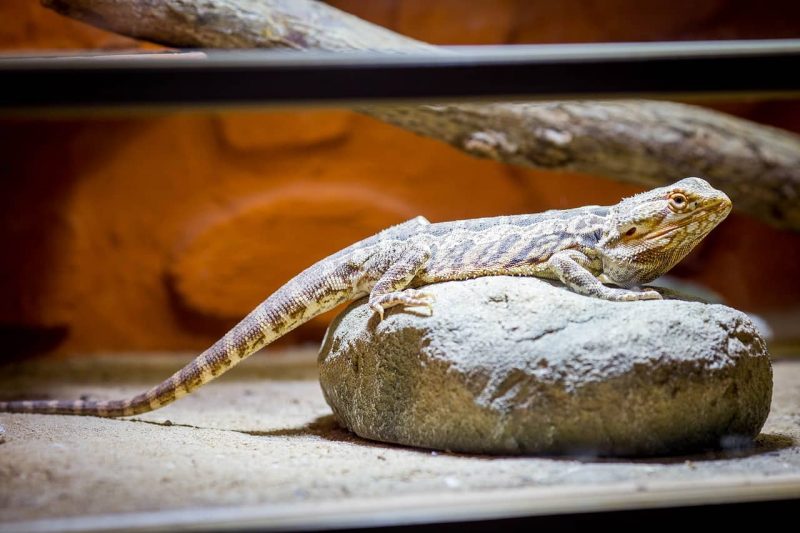
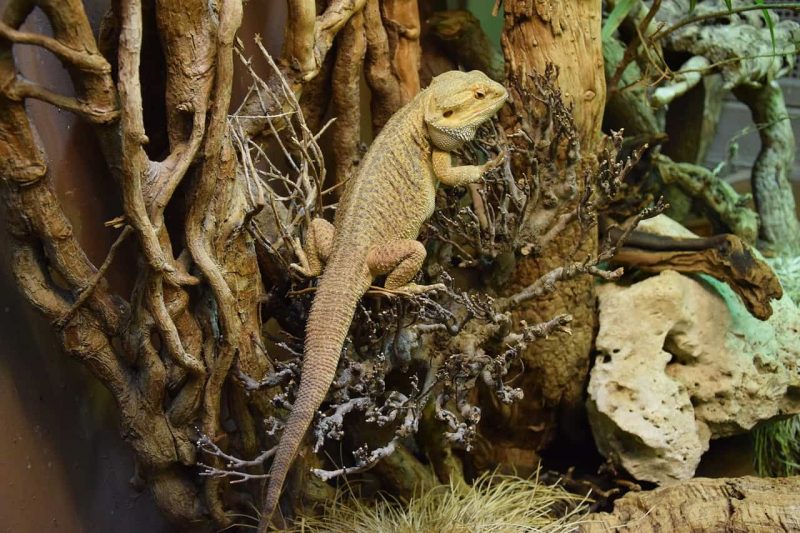
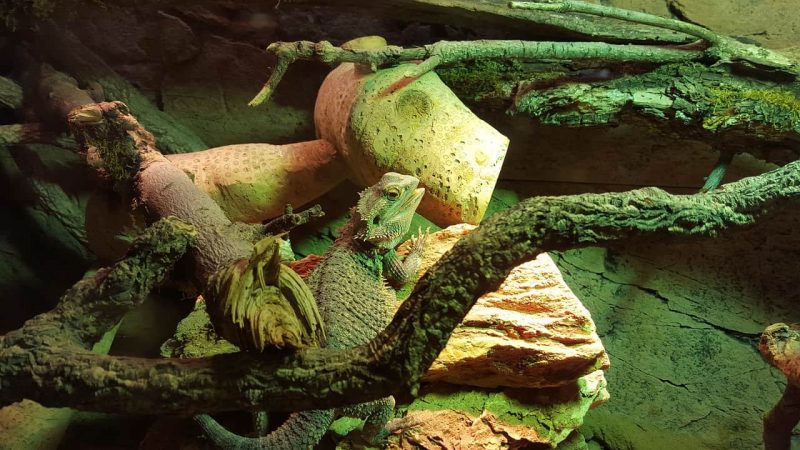
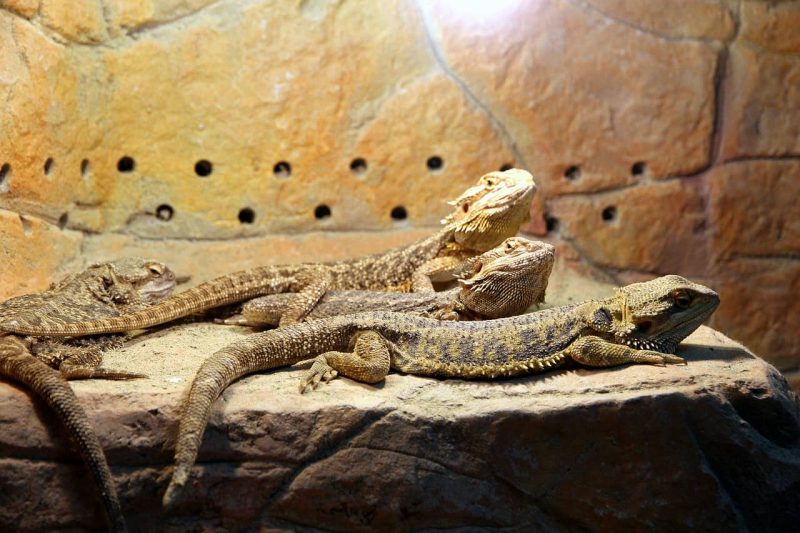
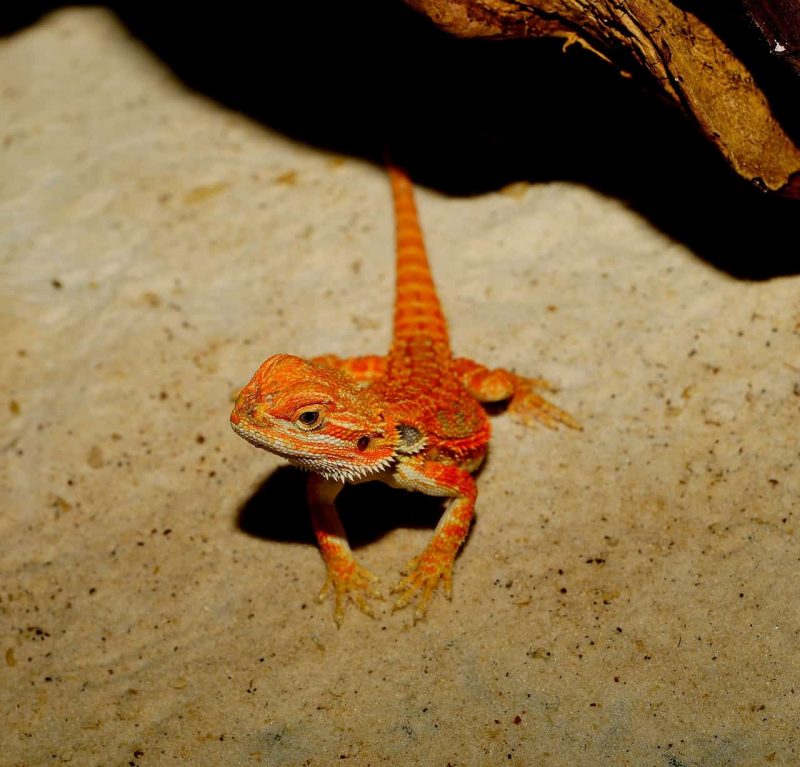
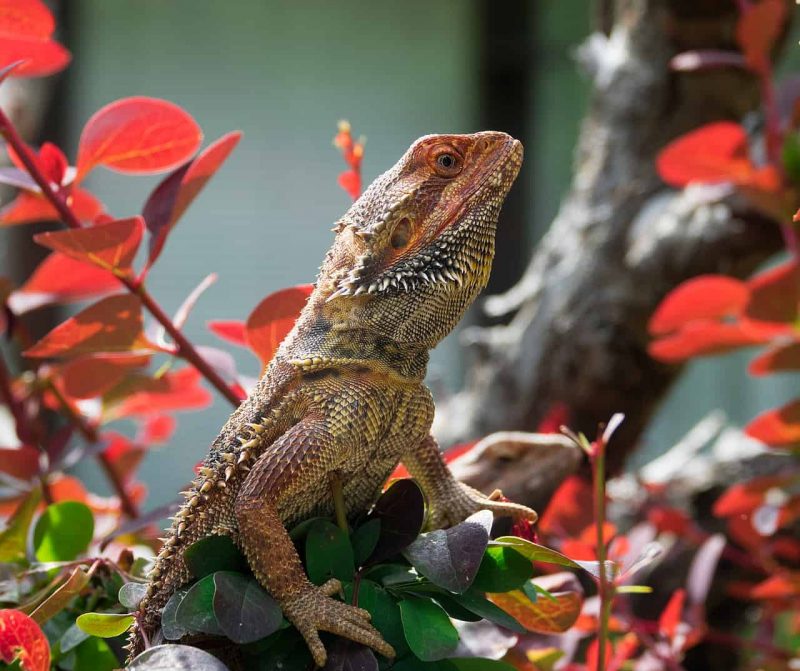

23 Comments
this is very informative article thank you
I’m glad if it helped. Thank you for words of support!
My Bearded Dragon will be 8 this year. I got her in 2015 I love her so much. I got home from work fed her dinner changed her water bowl. I got up to get a drink and glanced over and her head was submerged I panicked. She seems to be ok right now but I will be taking her to the vet in the morning god willing she will still be with me in the morning. I’m so nervous to put her back in her tank. Prayers needed.
Hi Wendy,
I believe taking her to the vet is a responsible thing to do in this situation, as you can’t be sure if your beardie girl has ended up with some water in her lungs. That could cause long-term respiratory illness and even death – but not so quickly as you first thought. There is time for intervention for sure.
The likely recommendation will be to keep an eye on her and watch out for aspiration signs.
These signs include watery discharge from the nose and the mouth, difficulty breathing, choking on own breath, and turning black (from feeling ill).
Also, I’d suggest getting a water bowl she can’t submerge her head into. Sure, they love to splash around, but safety always comes first.
Let us know how the ordeal worked out!
Hi
We’re trying to work out the best room to keep our bearded dragon in when we bring him home – the office upstairs where I’ll be for most of the day but not evenings or weekends or in the living room where we (there are 3 of us) spend most of our time in evenings and weekends. The living room can get quite noisy with tv etc and we can stay up late. Would this be too much for him?
Hi Kathy,
Whilst bearded dragons like to interact with humans, I feel your office is the best option. That way your dragon has a quiet place where it can relax and isn’t always in the middle of everything. Once your dragon is a little bigger you can always bring it down to the lounge to sit with you, as long as you keep it warm.
I inherited two 2 yr old beardies which are rather large. Are they considered juveniles or adults?
Hi Mary,
Adult Bearded Dragons are full grown at around 12 months and measure 16 – 24 inches. Please let me know if you have any more questions.
What happens if I have to go on a vacation for a week or something and get a pet sitter and I’m not there to constantly measure and regulate the temperature and the humidity?
Hi Noa,
It is best to have someone that knows how to care for reptiles to look after your beardie. However, you can simplify things, connect your heat sources and lights to timers and thermostats. That way the time the lights are on and temperatures of your enclosure will be automatically regulated. You can then explain to the pet sitter how to monitor the humidity. The other option is to see if your local pet shop offers a holiday boarding service.
Thanks. Getting a 4 year old female for my Lizard loving son for Christmas and I was trying to read up on as much as I can.
Hi, we got a six month old beardy a week ago, looks healthy, and seems alert, however, has only ate 2 small meal worms in that time, she scratches around in the sand a lot, we have taken her to a vet who has said its healthy, will this not eating be because she has been moved, she is still in her original setup thanks
Hey, Chris.
We’ll defer to your vet’s opinion, but we would expect her to eat a bit more than that over the course of a week. Make sure you double-check the enclosure temperatures, and if she continues to refuse food, consider visiting another vet.
Best of luck!
We’ve had Bearded Dragons for many many years and still to this day have 6. Our female’s house together in pairs (hatched from the same clutch) and our males are in their own enclosures. We found that over the years that with co-habitation the main issue to avoid is the bearded dragons having to fight over resources. Have multiple basking spots, have multiple branches, and multiple caves, this way they never have to compete for space or heat. And when it comes to live food… ALWAYS… ALLLLLWAYS feed them separately to avoid a potential competition for food and with some injuries!
Hey, Mel.
Great advice, and I concur, though I’ve never found it necessary to feed beardeds separately.
Thanks for sharing!
Hi beardie fans, we are setting up a new enclosure system and am looking for advice on lamp stands. Is one better,sturdier, move easier, etc? If you are stacking tanks can they reach 2 at a time or do you need more than one stand? Thanks for any replies
Hi Tasker,
Good luck with the new system! You haven’t provided much detail on how it will look, but as for some general lamp stand advice – if you mean “stacking” tanks horizontally, next to one another, I would definitely go for one stand per tank, unless it’s designed for two tanks (with two separate bulbs). If you’re stacking vertically, I fail to see how you could have one stand for two tanks – the typical stand design is for tanks that freely open at the top.
To avoid promoting any particular company so I would leave it to other readers to recommend a product they had the best experiences with.
Thank you for your comment!
This article was very helpful. My son has two bearded dragons, 3 leopard geckos and 2 South African Desert Tortoises. I have been trying to find larger enclosures for the dragons and a shelving system to put them all on. Any suggestions for shelving? They are all in his room so we are limited on space.
Also one of our dragons is much larger than the other. The smaller one doesn’t seem to grow at all. Is there a reason for this? They have been together quite a while and get along fine.
Thank you
Hey there, Debbye.
So glad you liked the article. I’m very familiar with the space issues that arise as a reptile collection starts to grow.
There are dozens of different types of shelves and tubs you could use, and you’ll just have to take some measurements and head down to your local home improvement store to find the best solution. That said, I’ve usually used shelves like this. The more difficult issue will be finding suitably large tubs for the lizards and tortoises. There are some commercial options available, specifically designed for reptiles. However, you can also check out metal or plastic stock tanks (you’d have to custom-build lids if necessary).
As for your lizard, size discrepancies often occur when lizards are kept in groups. The larger one is likely being a bit of a bully, consuming more food, and hogging the best basking spot. He may even be intimidating the smaller one a bit.
I’d recommend separating them if possible, so the smaller one can catch up. This is especially important if they’re both males.
Best of luck! I thank you for being so supportive of your youngster’s interest in reptiles! Reptile-keeping is a fantastic, constructive hobby that more parents should encourage!
Very informative.
This article was very helpful – thank you! We just got our dragon a month ago, and your articles are helping us to learn how to take good care of her. Your articles are very informative. Thank you!
This was the most helpful information that we have found on bearded dragon and appreciate it so much! Thank you for taking the time to write it!
Hi Mandie,
Thank you for your nice comment. It is always a pleasure to know that our articles are helpful 🙂